Jul 18, 2005
Philips' iCat for studying human-robot interaction topics
Via Medgadget
Philips new invention iCat promises to advance the field of human-robot interaction. The robot can express a wide range of expressions, and elaborate the user's reactions to these expressions. The robot is about fourty cm tall and is equipped with a number of servos that control different components of the face, including mouth and head position. Moving these parts of the face, the robot can make many different facial expressions. Reseachers can observe the user's reaction to these expressions and investigate i.e. the perceived personality of the iCat during a game or task setting.

Philips researchers predict that the iCat could have applications in psychology research (social cognition) and in medicine, for example to help autistic children or stroke survivors.
More to explore
- the Philips Research Technologies web page
19:40 Posted in AI & robotics | Permalink | Comments (0) | Tags: Positive Technology, robotics
Jul 16, 2005
Video games for health
Video games have been often criticized by for their negative psychological effects on children. However, a growing number of studies show that video game playing can be useful in health. In an editorial published on the authoritative British Medical Journal, Mark Griffiths, professor of gambling studies, describes how video games are used in health care. One innovative application is their use in pain management. The attention needed to play can distract the player from the sensation of pain, a strategy that has been reported and evaluated among paediatric patients.
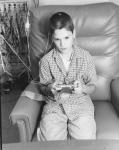
Video games have also been used as a form of physiotherapy or occupational therapy in many different groups of people. Such games focus attention away from potential discomfort and, unlike more traditional therapeutic activities, they do not rely on passive movements and sometimes painful manipulation of the limbs.
Read the full-text article published on BMJ (2005;331:122-123)
12:50 Posted in Cybertherapy | Permalink | Comments (0) | Tags: Positive Technology, virtual reality therapy
Jul 05, 2005
Accupix MP Glass MPG-230A HMD Video Glasses - Get Your Mobile Presence Experience
Wow. This is really cool stuff. The Accupix MP glass MPG-230A Video Glasses and portable player are maybe the best example of next-generation virtual reality systems. This technology enables the vision of "mobile presence": your body is in a physical space, but your mind is somewhere else. Imagine you're on the tube, bored and frustrated. Wou desperetely desire to escape from there, and experience five minute of peaceful relax. You have just to wear your portable immersive headset, and bon voyage.
There are many Positive applications that we can imagine using this technology, ranging from "traditional" virtual-reality based treatment to mobile telemedicine applications.
The system is also quite affordable (649$) as compared to traditional HMD.
If you want to know more, read the technical review by Ken Wold for I4U:
| Overview |
15:20 Posted in Wearable & mobile | Permalink | Comments (0) | Tags: Positive Technology, wearable
Jun 27, 2005
Tennis for the visually impaired
From Near near future
Tennis Sensation is a tennis game that allows a wide variety of users, particularly the visually impaired, to compete fairly.
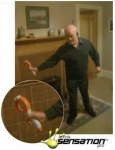
It uses spatial (3D) audio, to represent sounds at locations in space, enabling the user to locate the virtual ball. The handle of the "racquet" shows correct orientation and grip through contours and materials.
Skill and physical ability can be altered to allow use by the elderly and disabled. A handicapping level selection enables a grandparent to play with their grandchild. The game can be played by people in different locations. When gripped from the charger the product turns on and connects to the headphones automatically. It can connect through an internet connection or use the 3G phone network. Menus are navigated by tilting and options selected by squeezing the grip. Vibropads in the grip give the subtle vibrations associated with good and bad tennis shots, and haptics give the feel of a ball on the racquet at virtual impact. Banks of LEDs explode on impact, with colour representing the quality of the shot. A dedicated synthesiser generates the stereo sound and audio cues, and a Motorola RISC microprocessor performs the calculations.
13:15 Posted in Brain training & cognitive enhancement | Permalink | Comments (0) | Tags: Positive Technology, Cognitive prosthetics
May 31, 2005
Hearing colors: the Eye-borg
HMC Entertainment Systems have invented a new device called the Eye-Borg that allows people with visual impairments and even total blindness to experience the world in colour. This system has the added effect of turning them into cyborgs, or, more accurately Eye-Borgs.
The Eye-Borg project started when Adam Montandon gave a lecture on practical cyborg techniques and applications. He was approached by Neil Harbisson, a young student artist. 
Neil had a rare condition of achromatopsia (a rare hereditary vision disorder which affects 1 person in 33,000). One of the effects of achromatopsia is monochromatism, the inability to perceive colour. To him the world was black and white.
Fast Moving Energies
Neil’s only comprehension of colours were as “being an energy that I can’t see because it moves too quickly. I’ve imagined colours as fast moving energies”. Neil became curious as to the possibilities of a cyborg-like extension of his sensory system. A new input based prosthesis!
Adam built a system that would effectively hijack Neil’s other senses by allowing him to see colour through his ears. It works with a head mounted camera that reads colours directly in front of a person, and converts them in real-time, via a computer, into sound waves.
Surprisingly, within 15 minutes of Neil using the system he was able to instantly recognise similarities and differences between hues – something he had never previously been able to do.
Neil is now able to paint with a full spectrum of colors incredibly accurately, as he wears his Eye-Borg prosthesis 24 hours a day. HMC aim to develop the Eye-Borg further so that all colour-blind or partially sighted people can experience a new clarity of digital vision.
17:55 Posted in Positive Technology events | Permalink | Comments (0) | Tags: Positive Technology
May 11, 2005
Presence 2005 Conference
The 8th Annual International Workshop on Presence will be held at University College London, September 21-23.
The deadline for receipt of papers, short-papers, posters, panels, exhibition items is 6th June.
Up to 20 papers will be published in a special issue of Presence: Teleoperators and Virtual Environments (MIT Press).
See
http://www.temple.edu/ispr/conference/ for full details.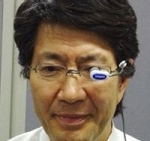
21:15 Posted in Positive Technology events | Permalink | Comments (0) | Tags: Positive Technology
Apr 28, 2005
Brain-machine Interface Test Promising
From Betterhumans
An experimental brain-machine interface has allowed a quadriplegic person to control a computer in what could be an early step to new assistive technologies for the disabled.
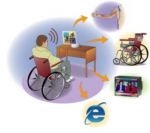
Cyberkinetics of Foxborough, Massachusetts has reported preliminary results for a pilot study of its BrainGate Neural Interface System, which the company aims to develop into a safe, effective and unobtrusive universal operating system for allowing disabled people to control devices using their thoughts.
"While these results are preliminary, I am extremely encouraged by what has been achieved to date," says study investigator Jon Mukand of Sargent Rehabilitation Center. "We now have early evidence that a person unable to move their arms, hands and legs can quickly gain control of a system which uses thoughts to control a computer and perform meaningful tasks. With additional development this may represent a significant breakthrough for people with severe disabilities."
Mental link
BrainGate, in a pilot study under a US Food and Drug Administration Investigational Device Exemption, uses an implanted neural signal sensor and external processors to allow users to control machinery.
The implanted sensor is about the size of a baby aspirin and contains 100 electrode probes thinner than a human hair. Implanted in part of the brain responsible for movement, the primary motor cortex, the probes detect the electrical activity of brain cells and relay this through a small wire exiting the scalp to a pedestal on the skull. A cable runs from the pedestal to a cart with computers, signal processors and monitors, allowing operators to study how well users can control their neural output.
For the reported study, an unidentified quadriplegic person with a three-year-old spinal cord injury had the sensor implanted this June in an approximately three-hour operation at Rhode Island Hospital in Providence. The procedure reportedly went as planned and the recipient has reportedly experienced no side-effects or problems healing.
Interactive mind
The study examined the recipient's use of BrainGate over two months and 20 study sessions. It found that the recipient could immediately adjust neural output in response to commands. It also found that a computer interface developed using the patient's thoughts allowed the subject to perform tasks and operate basic computer functions, including controlling a cursor, playing Pong with 70% accuracy and performing multiple tasks simultaneously, such as controlling a TV while talking.
While the findings are preliminary and based on a single patient, Cyberkinetics aims to enroll a total of five quadriplegic people between the ages of 18 and 60 who meet such criteria as being able to verbally communicate.
Each participant is expected to participate in a study for 13 months. Afterwards, participants can undergo surgery to have the device removed or choose to participate in future studies, which the first patient has chosen to do.
"Our ultimate goal is to develop the BrainGate System so that it can be linked to many useful devices, including for example, medical devices such as muscle stimulators, to give the physically disabled a significant improvement in their ability to interact with the world around them," says John Donoghue, chief scientific officer of Cyberkinetics.
The research was reported in Phoenix, Arizona at the 2004 annual meeting of the American Academy of Physical Medicine and Rehabilitation.
Cyberkinetics plans to announce more results and observations from the pilot study in San Diego, California at the 2004 annual meeting of the Society for Neuroscience.
14:45 Posted in Brain-computer interface | Permalink | Comments (0) | Tags: Positive Technology, brain-computer interface
Apr 13, 2005
Rescue Robots
Disaster rescue is one of the most serious social issues which involves very large numbers of heterogeneous agents in an hostile environment.
Rescue Robotics is a newly emerging field dealing with systems that support first response units in disaster missions. Especially mobile robots can be highly valuable tools in urban rescue missions after catastrophes like earthquakes, bomb- or gas-explosions or daily incidents like fires and road accidents involving hazardous materials. The robots can be used to inspect collapsed structures, to assess the situation and to search and locate victims.
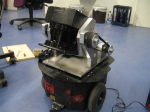
There are many engineering and scientific challenges in this domain. Rescue robots not only have to be designed for the harsh environmental conditions of disasters, but they also need advanced capabilities like intelligent behaviors to free them from constant supervision by operators.
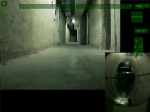
The main goal of the RoboCupRescue project is to promote research and development in this socially significant domain at various levels involving multi-agent team work coordination, physical robotic agents for search and rescue, information infrastructures, personal digital assistants, a standard simulator and decision support systems, evaluation benchmarks for rescue strategies and robotic systems that are all integrated into a comprehensive systems in future.
More to explore
The web site of RescueRobots Freiburg, one of the leading lab in the RR field
13:00 Posted in AI & robotics | Permalink | Comments (0) | Tags: Positive Technology, robotics
Apr 08, 2005
!!! Groundbreaking virtual reality SONY patent - A step closer to the Matrix !!!
07 April 2005
Exclusive from New Scientist Print Edition
Jenny Hogan Barry Fox
Imagine movies and computer games in which you get to smell, taste and perhaps even feel things. That's the tantalising prospect raised by a patent on a device for transmitting sensory data directly into the human brain - granted to none other than the entertainment giant Sony.
The technique suggested in the patent is entirely non-invasive. It describes a device that fires pulses of ultrasound at the head to modify firing patterns in targeted parts of the brain, creating "sensory experiences" ranging from moving images to tastes and sounds. This could give blind or deaf people the chance to see or hear, the patent claims.

While brain implants are becoming increasingly sophisticated, the only non-invasive ways of manipulating the brain remain crude. A technique known as transcranial magnetic stimulation can activate nerves by using rapidly changing magnetic fields to induce currents in brain tissue. However, magnetic fields cannot be finely focused on small groups of brain cells, whereas ultrasound could be.
If the method described by Sony really does work, it could have all sorts of uses in research and medicine, even if it is not capable of evoking sensory experiences detailed enough for the entertainment purposes envisaged in the patent.

Details are sparse, and Sony declined New Scientist's request for an interview with the inventor, who is based in its offices in San Diego, California. However, independent experts are not dismissing the idea out of hand. "I looked at it and found it plausible," says Niels Birbaumer, a pioneering neuroscientist at the University of Tübingen in Germany who has created devices that let people control devices via brain waves.
The application contains references to two scientific papers presenting research that could underpin the device. One, in an echo of Galvani's classic 18th-century experiments on frogs' legs that proved electricity can trigger nerve impulses, showed that certain kinds of ultrasound pulses can affect the excitability of nerves from a frog's leg. The author, Richard Mihran of the University of Colorado, Boulder, had no knowledge of the patent until New Scientist contacted him, but says he would be concerned about the proposed method's long-term safety.
Sony first submitted a patent application for the ultrasound method in 2000, which was granted in March 2003. Since then Sony has filed a series of continuations, most recently in December 2004 (US 2004/267118).
Elizabeth Boukis, spokeswoman for Sony Electronics, says the work is speculative. "There were not any experiments done," she says. "This particular patent was a prophetic invention. It was based on an inspiration that this may someday be the direction that technology will take us."
More to explore
Virtual Reality
Transcranial Magnetic Stimulation
Matrix: the movie
Press releases
Australian IT - Sony patents 'real' Matrix
News24 - Sony eyes 'real-life Matrix'
Forbes.com - Sony takes first step to patent 'real-life Matrix
Dawn International - Real life Matrix in the making
Timesonline - Sony takes 3-D cinema directly to the brain
Australian Financial Review - First step to patent 'real-life Matrix'
14:25 Posted in Cybertherapy | Permalink | Comments (0) | Tags: Positive Technology, virtual reality
Apr 06, 2005
Remote healthcare monitoring not so distant
The IST programme funded-project developed a comprehensive monitoring system to capture, transmit and distribute vital health data to doctors, carers and family. Pilot tests of the E-Care system indicate that doctors, nurses, patients and their families found E-Care reliable, simple to use and an effective method to improve the quality of care while reducing costs.
E-Care’s system dynamically produces data depending who accesses a patient's record. A doctor will see all the health information, a system or medical administrator will see data relevant to them, while patients, their friends or family, will see another set of data, all coming from the one file.
The system will monitor patients with chronic, or long-term, illnesses such as diabetes or cardiovascular disease, and patients discharged after an operation or serious medical crises, such as stroke victims.
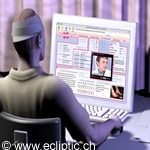
It can acquire vital information about a patient who lives far away from medical support, and it can alert medical staff if there is a dangerous change in patient's status. With e-Care’s system doctors spend less time going to see patients and more time treating them. It also means real-time monitoring without high staff or capital costs.
"Citizens with long-term illnesses as well as those who are in post-surgery state, or predisposed to illness, need monitoring of their health until their condition becomes stable," says E-Care project director Mariella Devoti.
"They, as well as their family and friends, also need an efficient way to collaborate with their doctor and get informed about their state. Until now, monitoring of the health condition of such people could only be accomplished by prearranged visits from a doctor, or by visits to the local hospital for a check-up. However, this is an inefficient solution, as well as costly, as these visits would scarcely be on a daily basis."
"[By] increasing the demand for long-term care, often at home, there are fewer facilities and medical staff available per patient," says Devoti. "This situation represents an important challenge for our society and it is urgent to provide consistent solutions to avoid a deep deterioration of the quality of life of millions of people."
Building a state-of-the-art remote monitoring system
Ten partners from Italy, Greece, the UK, Germany and Cyprus joined forces to develop a remote monitoring system that could take vital data from patients, automatically add the data to the patient's chart and render the information accessible via computer for analysis at a hospital or clinic.
"E-Care makes best use of state-of-the-art know-how from a wide spectrum of disciplines, ranging from medical devices and software to workflow management system, [which brings] experience from business modelling," Devoti says.
The system includes nine components deployed across two primary elements: patient monitoring and the central system.
On the patient side there's a wireless intelligent sensor network (WISE), bio-medical sensors and a radio terminal. WISE consists of a series of monitors that track signs like activity, temperature, pulse, blood pressure and glucose or other personal data like weight, pain measurement and drug conformance. Data collected by the sensors are sent to the transmitter that sends them to the central system.
But the system can work two ways. SMS messages sent to the drug conformance device to remind the patients when they need to take medication. Patients send a confirmation once they take the drugs.
The central system includes a medical data manager (MDM), E-Care repository, collaboration module, workflow system, security system and user Web applications.
The MDM automatically checks patient data against the patient's record and any doctor's notes. If there is a disturbing change in the patient's vital signs, for example high glucose levels in a diabetic, an alarm is sent directly to the patient's physician. This provides peace of mind for patient and family and ensures a doctor or medics can respond rapidly to any problems that arise. Similarly, the MDM can alert paramedical staff or a doctor if patient data fails to arrive when expected.
The E-Care repository stores all patient data. The collaboration module allows user to communicate using real-time synchronous message, audio conferencing or videoconference. Patients and family can confer with their doctor, or GPs or nurses can confer with a specialist.
The workflow system controls overall system processes, while user Web applications dynamically format the patient data depending on who is accessing the information and what access rights they have. Layouts for doctors, patients, system administrators, medical administrators and patient relatives, each with different information, are possible.
Researchers sought to avoid re-inventing the wheel by using standard and widely adopted technologies where possible. Transmission is across standard telecoms protocols such as GSM, 3G, bluetooth, radio and landline broadband. It means the system will work with any modern hospital or clinic.
Positive results from pilots
E-Care deployed in three pilot programmes between February 2003 and February 2004 and the overall result was very positive.
"The final validation results for E-Care showed a general satisfaction among doctors and medical staff, system and medical administrators, patients and their family," says coordinator Devoti.
Users praised its practicability, reliability, effectiveness and patient acceptance. Specifically, medical staff at Aldia in Italy, one of the project partners, gave some suggestions of the possible uses of the system, for example cardiovascular disease, or patients with chronic obliterating arteriopathy.
Diabetes specialists praised the glucose monitoring system. It allows the doctor to change patient treatment based on vital sign analysis. Similarly the blood pressure monitor was particularly of interest for patients with stroke or cardiovascular disease.
With the project validation complete the partners will fine tune the system and search for commercial opportunities. Remote monitoring is not so distant.
Contact:
Mariella Devoti
coordinator@e-care-project.org
Source: Based on information from E-Care
15:55 Posted in Cybertherapy | Permalink | Comments (0) | Tags: Positive Technology, telemedicine
Exploring the frontier of telepresence
By Geoff McMaster, ExpressNews Staff - The closest many of us have come to imagining virtual reality is the holodeck, a fantasy playground featured on the television series Star Trek.
Such flights of fancy are no longer the stuff of science fiction, however. Computer scientists at the U of A have already created technology allowing people to sit across from three-dimensional recreations of each other, even though in reality they may be thousands of miles apart.
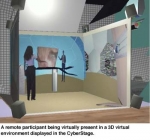
It's only the beginning of a revolution in virtual reality technology expected to take us by storm in the next decade or so, says Dr. Pierre Boulanger, a U of A computer scientist who just received an iCORE/TRLabs Industrial Research Chair worth a total of $1.7 million to develop his groundbreaking work in collaborative virtual environments.
Imagine a world, for example, where professors of surgery transmit hand and scalpel movements, as well as what they see while operating, thousands of miles across a computer network, where it is recreated in an operating room.
"The student will actually look at that and actually feel what the doctor is doing," said Boulanger. "On the other hand, the doctor can feel what the students are doing and give them a nudge in the right direction--It's like being in virtual residence with doctors."
Families separated by travel will spend meals together through what is called "telepresence," said Boulanger. "You would wear special goggles--and we're working on that--which would allow you to see your wife sitting in front of you, having a day-to-day conversation. In the future you will have virtual encounters like this, people you want to be part of a meeting sitting beside you virtually and having a conversation."
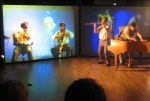
At a press conference on campus Tuesday to celebrate his chair, and that of Dr. Christoph Sensen at the University of Calgary, Boulanger explained how scientists are now able to create and manipulate a model of the earth's core by feeding computers highly sophisticated mathematical equations. Once recreated in 3D, the average person is fully capable of understanding such complex physical phenomena, he said. "People can actually interact with it, and say, "What happens if we have that instead of this?'"
"A three-dimensional visual model will allow you to explain complex systems, and understand how the world runs. People understand complex systems because daily life is actually very complex--the new technology is truly human-centred. Computers are smart enough today to adapt to people, and that's really a recent shift in computing."
The two chairs held by Boulanger and Sensen will focus on a variety of pursuits that will benefit from virtual reality technology, including engineering prototypes, testing medical procedures and conducting scientific research. Sensen, who has received $1 million for his research, is developing new tools to virtually work in the human body.
Boulanger was recruited to the University of Alberta's computing science department in 2001 from the National Research Council of Canada, where he spent 18 years as a senior research officer. He is also an adjunct scientist and principal investigator for new media at TRLabs, Canada's largest not-for-profit information and communications technology research consortium , and at the Banff Centre.
His new chair includes an iCORE Industrial Chair Establishment grant of $50,000 per year for five years, in addition to further grants from TRLabs, the University of Alberta, the Canada Foundation for Innovation, the Natural Sciences and Engineering Research Council, the Canadian Network for the Advancement of Research in Industry and Education and other industry partners.
"From my perspective, an absolutely essential part of Pierre's work on the collaborative virtual environment is described by the word collaborative," said dean of science Gregory Taylor. "It's at the very forefront of what I like to call the new science, interdisciplinary science where the collaborative team becomes the vehicle for discovery."
iCORE was established six years ago by the provincial government to support university research that supports information and communications technology. There are now 20 chairs focused on emerging areas such as wireless communications, artificial intelligence and quantum nanocomputing
15:45 Posted in Telepresence & virtual presence | Permalink | Comments (0) | Tags: Positive Technology, Presence
Apr 04, 2005
Virtual reality for disabled individuals
From the "Presence" listserv
By ERIN BELL
September 23, 2004
Special to The Globe and Mail
Anyone who's used Sony's EyeToy for the PlayStation 2 console knows how much fun it can be to put yourself into a video game with the help of a camera. More advanced technology developed in Canada is being used to help people with special needs learn skills and experience things that used to be beyond their reach.
The technology comes from a partnership between integrator Xperiential Learning Solutions Inc. and Toronto developer Jestertek Inc. (formerly the Vivid Group), whose virtual reality systems have been installed in places ranging from museums and science centres to the hockey and basketball halls of fame.
The pair's Experiential Learning Product Suite is aimed at people with physical, mental or behavioural disabilities.
Xperiential's founder, Theo D'Hollander, has a son with autism and relatives who suffer from cerebral palsy and Down syndrome. "It made me realize that this whole area [of technology for people with disabilities] is almost like a generation behind, it's in the industrial age when the rest of the world is in the Internet age," he said. "Today's technology is great for things like information gathering, but it has actually created more distance between people with disabilities and the life or job opportunities they need. The answer is to use technology to help create new experiences for them."
Like Sony's EyeToy, the Experiential Learning Product Suite uses cameras to capture a person's image and project it onto a monitor or large screen, combining it in real-time with the computer-generated action. The player can participate in virtual reality scenarios such as snowboarding, soccer, boxing, racing, and even mountain climbing, controlling the action by moving parts of their body. It's there the similarities cease, however.
Using cameras that capture at least 30 frames a second and hardware much more powerful than a game console, the suite can adapt to a player's physical characteristics and abilities.
Sensitivity, speed and range of motion are adjustable, allowing people to control programs with tiny gestures -- from a shrug to a toe-twitch -- letting a bedridden person see what it's like to ride a horse, or someone without the use of their hands play a virtual musical instrument.
The profile for each user can be fine-tuned as their mobility or skills improve. The partners are also working on a way to allow people to compete or collaborate on-line.
"It's very much a motivational experience for the kids or adults with disabilities who use the system," Jestertek president Vincent John Vincent said.
"Children with cognitive disabilities have short attention spans,"Mr. D'Hollander added. "With these programs, they're engaged by the games and music. There's something enticing about seeing themselves on television, and the idea that they're inside a computer game."
A study by the University of Ottawa is looking at ways to use the suite to make children's home-exercise rehabilitation programs more engaging.
"This gives people, especially those with some cognitive impairments or disabilities, the opportunity to have an experience that could not be possible otherwise," explained Dr. Heidi Seistrup, associate professor in the University's School of Rehabilitation Sciences.
"For example, they could play volleyball even though they're in a wheelchair, just by moving their fingers. The environment can be tweaked to allow someone with a very limited range of motion to play against someone who has a full range of motion. You put them on a level playing field, which you can't do in real life very easily."
In other cases, the suite is used to teach life skills. There are modules that can train people to sort a load of laundry, teach basic traffic safety, or show how to serve customers in a doughnut shop.
The system can be a social behaviour coach, too, Mr.
D'Hollander said. "Having a child with autism go to a family gathering at Christmas or go into a crowded mall is a big issue, because the initial encounter is so intense they can't handle it.
We can create a tape of family settings or a mall, and allow children to get used to it by interacting with [the virtual crowd] before they encounter the real thing, helping them over that social hurdle."
A site licence for the Experiential Learning Product Suite is $5,600 (including hardware for a single user and several dozen applications), and systems for additional users can be purchased for around $750 each. There's also a basic unit that sells for around $400, including about a dozen games, to deliver extra entertainment and exercise-related programs in a home setting.
Over the past several months, Xperiential has sold about 30 site licences to community living homes, rehabilitation centres and school boards across Ontario, as well as to customers in the United States and Europe, Mr. D'Hollander said.
A unit was recently installed at Community Living Oakville in Oakville, Ont. "We use it three times a week, and it's awesome,"
day service worker Kelleigh Melito said. "They love the dancing, racing and snowboarding. Because of our location, they can't get out much to go for walks, because there are no sidewalks; this is how they get their exercise."
Don Seymour, executive director of developmental services for Lambton County, Ont., said he hopes to use the virtual reality units in all the special needs homes under his jurisdiction.
"I watched a fellow we support who is in a wheelchair get in front of the camera and look at the screen, and all of a sudden realize he was in a racecar," Mr. Seymour said. "All he had to do was move his shoulders to race this car around a track. For a person who has limited mobility with their arms or legs, to be able to steer a racecar on a big screen was incredible."
"You hear about this stuff a dozen times in a year, and then to actually find something that has immediate flexibility to our folks is quite something," he added.
17:50 Posted in Cybertherapy | Permalink | Comments (0) | Tags: Positive Technology, virtual reality
New article about Presence published on Nature!
Maria V. Sanchez-Vives and Mel Slater have published a review article entitled "From Presence to Consciousness through Virtual Reality" on the prestigious journal Nature Neuroscience (ASI impact factor 2003: 27.007).
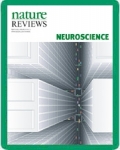
In this article, the authors argue that presence - the sense of "being there" perceived during the exploration of a virtual environment - is worthy of study by neuroscientists, and that it might aid the study of perception and consciousness.
Maria V. Sanchez-Vives, Mel Slater, From Presence to Consciousness through Virtual Reality, Nature Reviews Neuroscience 6, 332-339 (2005); doi:10.1038/nrn1651
12:15 Posted in Telepresence & virtual presence | Permalink | Comments (0) | Tags: Positive Technology, Presence
Mar 31, 2005
Biofeedback - improve health using signals from your own body
Biofeedback is a treatment technique in which people are trained to improve their health
by using signals from their own bodies. Physical therapists use biofeedback to help stroke
victims regain movement in paralyzed muscles. Psychologists use it to help tense and
anxious clients learn to relax. Specialists in many different fields use biofeedback to help
their patients cope with pain.
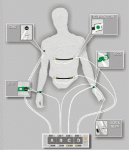 Research has demonstrated that biofeedback can help in the treatment of many diseases and painful conditions. It has shown that we have more control over so-called involuntary bodily function than we once though possible. But it has also shown that nature limits the extent of such control. Scientists are now trying to determine just how much voluntary control we can exert.
Research has demonstrated that biofeedback can help in the treatment of many diseases and painful conditions. It has shown that we have more control over so-called involuntary bodily function than we once though possible. But it has also shown that nature limits the extent of such control. Scientists are now trying to determine just how much voluntary control we can exert.
Clinical biofeedback techniques that grew out of the early laboratory procedures are now
widely used to treat an ever-lengthening list of conditions. These include:
·Migraine headaches, tension headaches, and many other types of pain
·Disorders of the digestive system
·High blood pressure and its opposite, low blood pressure
·Cardiac arrhythmias (abnormalities, sometimes dangerous, in the rhythm of the heartbeat)
·Raynaud's disease (a circulatory disorder that causes uncomfortably cold hands)
·Epilepsy
·Paralysis and other movement disorders
Low-cost biofeedback devices and products
ProComp Infiniti
Powerful 8 channel encoder provides real-time biofeedback and data acquisition in any clinical setting.

The Journey to Wild Divine
Learn to relax while playing this immersive new biofeedback videogame. Take a deep breath...

RESPeRATE
RESPeRATE is the only FDA-cleared, non-drug, medical device clinically proven to lower high blood pressure with no side effects.

Freeze-Framer
You'll appreciate all you can learn about the power of your heart. It's also just plain fun to play the games while you learn.

Mini C2+
This tiny 6 channel unit is an affordable, powerful multi-modality biofeedback system.

More to explore
Biofeedback Foundation of Europe
The Association for Applied Psychophysiology and Biofeedback
Society for the Study of Neuronal Regulation
The Biofeedback Certification Institute of America
13:35 Posted in Biofeedback & neurofeedback | Permalink | Comments (0) | Tags: Positive Technology, Biofeedback
Mar 29, 2005
Captology: The science of Persuasive Technology
Can computers change what you think and do? Can they motivate you to stop smoking, persuade you to buy insurance, or convince you to join the Army?
The Stanford Persuasive Technology Lab, founded by BJ Fogg, an experimental psychologist, is trying to answer these questions. The lab creates insight into how computing products -- from websites to mobile phone software -- can be designed to change what people believe and what they do.
Like human persuaders, persuasive interactive technologies can bring about positive changes in many domains, including health, business, safety, and education. With such ends in mind, we are creating a body of expertise in the design, theory, and analysis of persuasive technologies, an area called "captology."
This is how Fogg describes the key concepts of his vision:
"Captology is the study of computers as persuasive technologies. This includes the design, research, and analysis of interactive computing products created for the purpose of changing people's attitudes or behaviors. As the graphic shows, captology describes the area where computing technology and persuasion overlap.
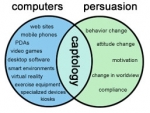
In the last few years we've seen this area grow quickly. Each week more computing products are designed to change what users think and do. We expect this trend to continue, especially as mobile phones become more capable of running third-party software applications.

We've identified over 100 uses for persuasive technology. Hundreds of other uses exist. Whenever there is a need to change what people believe or how they behave, persuasive technology may very well play a role"
More to explore
The web site of the Lab: http://captology.stanford.edu/
Fogg's book "Persuasive Technology"
18:15 Posted in Pervasive computing | Permalink | Comments (0) | Tags: Positive Technology, Ambient intelligence
Mar 23, 2005
Wearable kinesthetic system for capturing upper limb movements
Tognetti and his collaborators at The Interdepartmental Research Center "E. Piaggio", University of Pisa, have recently developed a wearable kinesthetic system for capturing upper limb movements in post-stroke rehabilitation. In this system (see picture below), a lycra shirt has been equipped with a sensing apparatus. Sensors have been spread on the fabric by employing an electrically conductive elastomer.

This material does not change the mechanical characteristics of the fabric preserving the wearability and it confers to the fabric piezoresistive properties related to mechanical solicitations.
Read the full article recently published on the Journal of Neuroengineering and Rehabilitation
11:30 Posted in Wearable & mobile | Permalink | Comments (0) | Tags: Positive Technology, wearable
Considerate computing
Ambient Intelligence will radically change how people interact with technology. In AmI, people will be surrounded by a multitude of interconnected embedded systems. These devices will be able to locate and recognize objects and people, as well as people’s intentions.
Following this view, AmI researchers are beginning to design computing devices that adapt the volume and timing of their communications to the cognitive needs of user. Such systems with a deep understanding of user attention have been referred to as Attentive User Interfaces
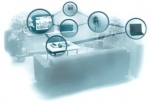
In AmI spaces these systems will proactively undertake speculative or anticipatory actions to hide the overall system complexity, by delivering to the users only information which is rich with meanings and contexts and provide stable functionality whenever requested
This article by Wayt Gibbs, recently published on Scientific American, show how engineers are testing computers, phones and cars that sense when you are busy and spare you from distractions...
More to explore
Attentive User Interfaces. Special section. Edited by Roel Vertegaal in Communications of the ACM, Vol. 46, No. 3, pages 30–72; March 2003.
Learning and Reasoning about Interruption. Eric Horvitz and Johnson Apacible. Proceedings of the Fifth International Conference on Multimodal Interfaces, November 2003. Proceedings of the International Workshop on Progress and Future Directions of Adaptive Driver Assistance Research. Washington, D.C., May 2004. Available online at www.volpe.dot.gov/opsad/saveit/
A variety of relevant technical articles are available online at http://interruptions.net
11:15 Posted in Pervasive computing | Permalink | Comments (0) | Tags: Positive Technology, Ambient intelligence
VR for PTSD rehabilitation in Israel
From Israel21c, "A focus beyond conflict"
Watching it - in three dimensions and full sound while wearing a head-mounted display helmet -may help hundreds of Israelis who have witnessed real terror attacks overcome post-traumatic stress disorder (PTSD), and is the basis of a new therapy for treating particularly resistant cases of PTSD.

The treatment is just one of dozens of novel applications of virtual reality (VR) technology which were demonstrated recently at the University of Haifa during the Third VR Symposium. Weiss, the person who brought together many of the world's leading VR wizards - and who is herself involved in several cutting edge VR applications, is a strictly observant Israeli who lives in the ultra-Orthodox neighborhood of B'nai Brak.

"It's not exactly normal," admits Weiss to ISRAEL21c, laughing at the contrast between her traditional way of life and the 'Brave New World' that characterizes her professional pursuits.
But Weiss sees no contradiction between the two. "I have always been interested in different technologies and my goal has always been to help people," says the researcher, whose library has volumes of Psalms and kinesiology textbooks side by side.
An occupational therapist by training, Weiss grew up in Canada and taught at McGill University in Montreal for many years, before immigrating to Israel in 1991 with her Israel-born husband. For the last four years she has been a researcher and lecturer at the University of Haifa, and a member of its newly-established Laboratory for Innovations in Rehabilitation Technology.
Weiss's interest in VR was piqued when she read an article by one of the pioneers in the field, Prof. Albert 'Skip' Rizzo of the University of Southern California, nearly a decade ago. That ultimately led to a close collaboration with Rizzo, who also attended this month's symposium.
What interests her about the field? "Look at this," says Weiss, showing a videotape of a woman with a spinal cord injury doing traditional physiotherapy. The therapist hands her a plastic ring which she must grasp without losing her balance - then another ring, and another, and another. "Let's face it. It's very static and very boring."
Now she shows a videotape of another patient who is also learning to balance himself - only he is watching himself on a giant screen, against a breath-taking mountain backdrop, swatting at balls in the sky. Every ball he hits turns into a colourful bird. The scene is virtual, but the man's movements - he is leaping and swatting with increasing determination - are very real.
"It's interesting and motivating," explains Weiss. "I have yet to meet a patient - of any age - who didn't like it. So it's very effective." (In a newer version, she notes excitedly, patients will wear a glove which vibrates whenever they make contact with a virtual ball - further increasing the sense of realness.)
The symposium Weiss organized, which brought leading VR experts from the US, Canada, Europe, Japan and Israel, to Haifa showed the dizzying range of new VR technologies dedicated to health and rehabilitation - from a robotic dog, who can be a reliable companion for the elderly - "no need to feed him or take him for walks," noted the researcher who demonstrated the small, black, yelping Sony invention - to 3D interactive games that could some day be used for early diagnoses of Alzheimer's disease, treatment of attention deficit disorder, and rehabilitation of patients who have suffered central nervous system injuries.
"Virtual reality has completely revolutionized the field of occupational therapy," says Weiss, who is personally involved in several innovative VR projects, including the simulated bus bombing program designed to treat Israelis suffering from severe post-traumatic stress.
That program - developed together with Dr. Naomi Josman, Prof.Eli Somer and Ayelet Reisberg, all of the University of Haifa, as well as with American researchers - is designed to expose patients in a controlled manner to the traumatic incident which they are often unable to remember, but which has a powerful and debilitating effect on their lives.
The realistic rendering of the bus bombing triggers the patient's memories - the first vital step on the path to overcoming trauma. (The simulation does not include all the gruesome details of the attack, but rather just enough to help the patient recall what happened.)
It was Josman who first came up with the idea of using such a treatment in Israel. She was attending a conference in the United States when she saw how University of Washington Prof. Hunter Hoffman had applied VR to successfully treat Americans suffering from PTSD following the 9/11 attack on the Twin Towers.
Similar programs have also been used recently to help American veterans traumatized by their tour of duty in Iraq, and even Vietnam veterans for whom no other treatment has proven effective.
Through close collaboration with Hoffman, the U. of Haifa team developed an Israeli version of the program which is now being used to treat the first few patients.
"If our pilot study is effective, we will launch a full-scale clinical trial," says Weiss, "and hopefully we will be able to provide a solution for those PTSD patients who have been resistant to more traditional cognitive therapy."
In another application of VR technology, Weiss and U. of Haifa colleagues have developed a program to help stroke victims relearn the basic skills required to shop on their own. The patient composes a grocery list and makes his or her way through a 'virtual supermarket,' seeking the right products, pulling them off the shelves and into a shopping cart, while announcements of sales are broadcast on the loudspeaker system.
"It's the first such program designed to improve both cognitive and motor skills of stroke victims," she notes.
Last week, the American Occupational Therapy Foundation (AOTF) invited Weiss to join its Academy of Research, the highest scholarly honor that the AOTF confers.
"Your work clearly helps to move the profession ahead, and demonstrates powerful evidence of the importance of assistive technology in helping persons with disabilities participate in the occupations of their choice, while improving the quality of their lives," the AOTF wrote in its letter to Weiss.
For Weiss, virtual reality is not only the focus of research, but a way of life - at least in her work. She communicates with her colleagues around the world by tele-conference and, of course, email - and notes that she has never even met her close collaborator Hoffman even though they have been
communicating several times a week for years. She also taught an entire university course last semester - without ever attending a lecture hall. Instead, she sat in the comfort of her B'nai Brak home, wearing a headset and microphone to deliver a weekly videoconferenced lesson on assistance technology to students who sat in their own homes.
"They could see a video of me, and whenever a student wanted to speak I would see the icon of a hand being raised. We even had guest lecturers from abroad. The students really appreciated not having to come to the university late at night for the course," says Weiss, who was pleased to be able to - once again - harness technology to help make people's lives a little easier.
10:30 Posted in Cybertherapy | Permalink | Comments (0) | Tags: Positive Technology, virtual reality, cybertherapy
Mar 18, 2005
Does medical technology really help doctors?
From WIRED
By Kristen Philipkoski
Nevertheless, the Centers for Medicare & Medicaid Services, or CMS, which provides health insurance to seniors and the poor, is giving a few technologies a shot at improving the government organization's dismal track record managing patients with chronic conditions.
Medicare's history of not adequately covering preventive health services has created a culture of patients waiting until things get really bad before they'll head to the hospital. Such acute care is far more expensive than the ongoing maintenance that can fend off emergencies in the first place.
As part of the Medicare Modernization Act of 2003, CMS is sponsoring nine pilot projects involving 180,000 patients and using technologies administrators hope will improve preventive care. Officials anticipate that the program could, for example, help a diabetes patient get to the doctor before she requires a leg amputation, or allow a doctor to begin a new prescription or diet before his patient suffers heart failure.
How expensive is chronic care? Two-thirds of Medicare money ($236.5 billion in 2001) is spent on just 20 percent of those enrolled, according to a 2002 report (.pdf) from Partnership for Solutions, a group that studies chronic health conditions. Everyone in that 20 percent is coping with five or more chronic conditions. The first of the baby boomers officially become seniors in 2011, and it is clear Medicare needs help, particularly in its chronic-care approach.
"This needs to happen anyway," said Sandy Foote, senior adviser for the Chronic Care Improvement Program at CMS.

CMS has chosen patients with chronic-care needs to participate in pilot projects that will implement technologies ranging from automated phone reminder systems and interactive in-home devices that ask patients questions about their health to hospital technologies for physicians.
CMS is paying health-management organizations like McKesson and Health Dialog to deliver technologies to those patients. But if after three years Medicare doesn't see a substantial improvement in health benefits and costs compared to a randomly selected group of about 100,000 control patients, CMS will ask for an unspecified portion of the fees back.
"We're not going to lock into a technology that may very well be outdated soon," Foote said. "We're paying organizations to help people in very individualized, very personalized ways to reduce their health risks, and they can keep refining how they do that."
That means, for example, McKesson is also not bound by the technologies it has chosen to implement. If something looks like it's not benefiting -- or actually is hindering -- patients or physicians, McKesson or any of the other management organizations can nix a technology for one that might work better.
The program sets up an exceptional potential for change and innovation in a hefty, bureaucratic government organization. And recent studies showing the failure of some medical technologies suggest that flexibility might be a good thing.
Two studies published in the March 9 issue of the Journal of the American Medical Association found that technologies designed to make physicians' jobs easier sometimes didn't, and in some cases the tools actually made the doctors' work more difficult.
"The system should not control the process of doing medicine but respond to how the hospital works," said the University of Pennsylvania's Dr. Ross Koppel, the lead author of the JAMA study. "Very often the software designers expect the users to wrap themselves like pretzels around the software, rather than making it respond to the hospital's needs."
18:05 Posted in Cybertherapy | Permalink | Comments (0) | Tags: Positive Technology, telemedicine
Feb 11, 2005
Cibex-Trazer VR system for neurorehabilitation
Retrieved from: the PRESENCE - Listserve
It may sound like science fiction, but it’s exactly what Bob Verdun, the new director of the Pawtucket Family YMCA, wants to achieve with a cutting-edge piece of fitness equipment called the Trazer.
The Trazer is a serious machine, using optical sensors, an electronic "beacon," and interactive, virtual reality software to facilitate exercise training, sports testing and rehabilitation -- but Verdun is more interested in its kid-appeal.
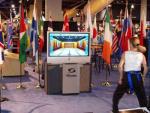
That’s because the Trazer is the fitness equivalent of the nutritious Twinkie: A virtual reality video game designed to make excise universally accessible and, believe it or not, fun.
"There is a resistance for kids who are not good at team sports to join a school team, and these are usually the kids who need exercise the most," said Ray Giannelli, the senior vice president of research and development for Cybex International, the Massachusetts-based company that will ship three of the first production Trazers to Pawtucket this spring.
The Trazer, said Giannelli, will give sports-adverse kids a fighting chance to stay in shape by putting simple, effective exercises within the familiar context of a video game.
"A lot of kids today are on the computer all day, e-mailing or chatting or playing video games," said Verdun, "This is the perfect bridge to exercise, a viable way to win the war against childhood obesity."
Here’s how it works:
Optical sensors mounted beneath a sleek, high-definition video display are trained to register the movements of an electronic beacon in a 6-foot, three-dimensional space.
When the beacon is attached to a belt worn by the user, his or her movements are mimicked in real-time by a virtual character in a virtual world.
An easy-to-navigate options menu features interactive programs for performance testing and sports training, as well as rehabilitative movement therapy, kinesthetic learning and fitness fun.
There are programs designed for the elderly to help them strengthen neglected muscles and maintain a full range of motion, and games designed to keep kids excited about physical activity.
In one game called "Trap Attack," players are required to move their virtual self across a three-dimensional chessboard, in sync with a roving red cursor.
Play the game on a basic difficulty setting, and the cursor moves relatively slowly, one square at a time. Crank up the difficulty, and trapdoors will appear, forcing you to jump over them.
Another game, "Goalie Wars," allows the player to intercept and "catch" soccer balls thrown by a virtual goalie. Once caught, a ball can be thrown back by lunging forward, and if you fake-out your polygonal opponent, you score a point.
Although optical sensors and virtual reality video games are impressive, they’re not exactly new.
The real meat and potatoes of Trazer is its ability to analyze and tabulate the data it collects. While you play "Goalie Wars" or "Trap Attack," the Trazer is measuring your reaction time, acceleration, speed, power, balance, agility, jumping height, endurance, heart rate and caloric output.
These statistics are displayed and saved after the completion of each exercise, a feature which will allows serious athletes, convalescents and kids to quantify their performance and track their progress.
As they’re fond of saying at Cybex, Trazer has more in common with a flight simulator than an exercise machine.
The Trazer is a versatile exercise machine, but Verdun and his colleagues are hoping it will be a crowd-pleaser as well.
Although the Trazer is still in development, a video demonstration of its capabilities and a hands-on demonstration of the more conventional Cybex Arc Trainer -- a high-tech step- machine -- are expected to be the main attractions at the YMCA’s open house on Saturday.
Scheduled for Saturday, from 10 a.m. to 12 p.m., the open house is a sneak preview: a way to show current and prospective members what they can expect from the Y’s $8 million facelift -- a soup-to-nuts overhaul which will include renovated facilities, expanded program space and brand-new, state-of-the-art fitness equipment.
The ultimate goal is to make the YMCA more family-friendly and appeal to old people, young people and everyone in between. To Verdun’s thinking, what better way to bring the 115-year-old building into the realm of iPods and Instant Messages than a video game.
"We want parents and children to know that there isn’t anything they can’t do at our facility," Verdun said in a recent interview.
"Families can come here, exercise together, and share an experience that is affordable, safe and fun.
"You don’t think about moving around when you’re on the Trazer, and that’s exactly what we want. The essence of the YMCA is having fun."
15:30 Posted in Cybertherapy | Permalink | Comments (0) | Tags: Positive Technology, virtual reality







